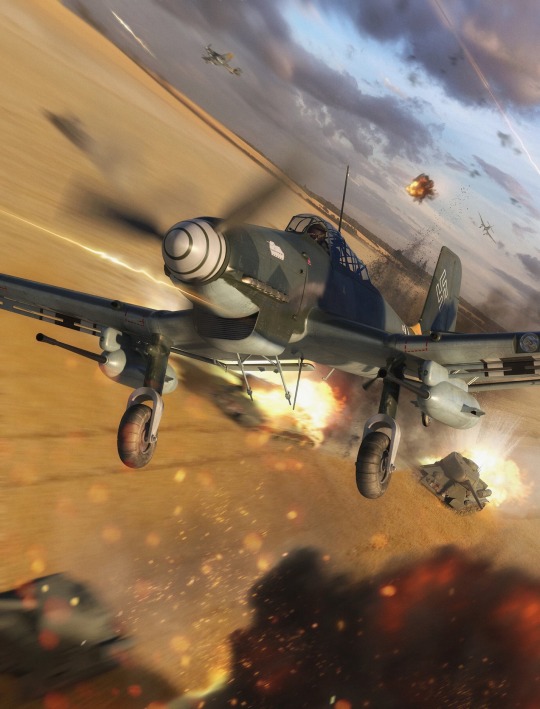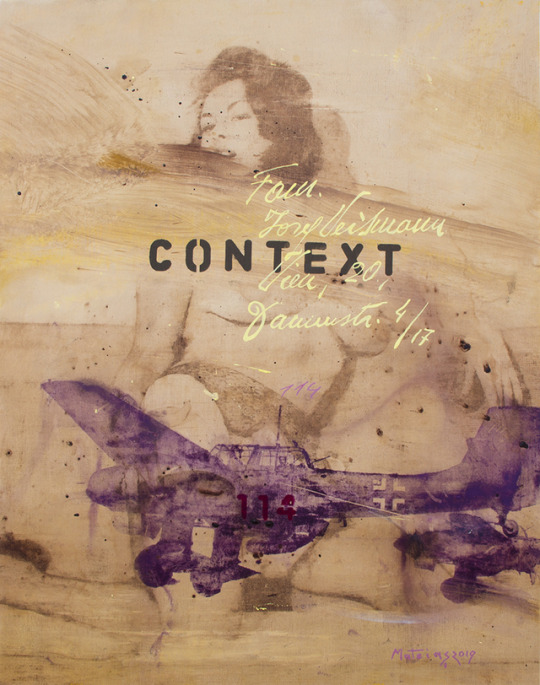#junkersju87
Explore tagged Tumblr posts
Photo

Junkers Ju 87
The Junkers Ju 87 'Stuka' was a two-seater dive-bomber plane used by the German Air Force (Luftwaffe) in various theatres of the Second World War (1939-45). The Stuka, with its distinctive angled wings, excelled when combined with armoured divisions in Germany's blitzkrieg ('lightning war') tactics in the early years of the war, but its inferior speed and manoeuvrability compared to single-seat fighters meant that it was ultimately restricted to hitting static targets where the Luftwaffe enjoyed air superiority.
Design & Development
In 1934, the German aircraft company Junkers was commissioned by the Nazi regime to design a prototype dive bomber. The idea was that a dive-bomber aircraft would be capable of delivering bombs at a lower altitude and with more accuracy than traditional high-altitude bombers, which dropped their loads vertically. Three prototypes were produced with design adjustments made to ensure the wings of the aircraft could withstand the force of diving from altitude. The best Junkers design, which included a Junkers Jump 210A engine, impressed against competition from rival manufacturers Arado, Hamburger, and Heinkel. Both Junkers and Heinkel were commissioned to produce 10 aircraft each. Several Ju 87s, as they were now classified, were tested in real combat conditions in the Spanish Civil War (1936-9) where they were flown by Germany's Condor Legion.
The Junkers Ju 87 had two seats, one for the pilot and one immediately behind for the rear gunner/radio operator. The aircraft gained the nickname 'Stuka', short for Stürzkampfflugzeug, meaning 'dive-bomber' in German, although the Germans themselves nicknamed the plane 'Berta'. The Stuka's bomb load mechanism "swung the weapon clear of the fuselage and propeller arc before it was released" (Saunders, 30). This feature, combined with the aircraft's ability to dive at a steep 80-degree angle (helped by a special dive-braking system), meant that it could strike a target with a much higher degree of accuracy compared to other types of bombers. Hitting a moving or small target remained a challenge and so, given that there was a mere 1.5-second window in which to release the bomb load at the bottom of a dive, only the most skilled Stuka pilots could regularly hit the objective of their extensive training: a 10-metre radius circle. Nevertheless, dive-bombing "proved four times more accurate than normal horizontal bombing from altitude" (Dear, 115).
By 1938, the main Stuka production plant was the Weser plant at Berlin-Tempelhof. Further design tweaks were made to the fuselage and distinctive fixed landing gears with their 'trouser' covers. The angled, 'gull' wings of the Stuka also set it apart from other aircraft of the period. Over the course of several new production models, a much more powerful engine was installed, the most powerful being capable of an impressive 410 km/h (255 mph), although this was significantly less than the best Allied or Axis single-seat fighters of the period, which could fly well over 480 km/h (300 mph). As the Nazi regime geared up for a war of conquest in Europe, Junkers was required to step up Stuka production to 60 models a month. By the start of WWII, which began with Germany's invasion of Poland in September 1939, the Luftwaffe had 336 Stukas, a figure which soon increased to 557. These aircraft were divided into nine Luftwaffe Stukagruppen. The aircraft was also flown by the Italian air force and by the air forces of other Axis allies such as Bulgaria, Croatia, Hungary, and Romania.
Stuka Dive-bombers in Poland, 1939.
Bundesarchiv, Bild 183-1987-1210-502 / Hoffmann, Heinrich (CC BY-SA)
Continue reading...
24 notes
·
View notes
Photo

Junkers Ju 87
Le Junkers Ju 87 "Stuka" était un bombardier en piqué biplace utilisé par l'armée de l'air allemande (Luftwaffe) sur différents théâtres de la Seconde Guerre mondiale (1939-45). Le Stuka, avec ses ailes inclinées caractéristiques, excellait lorsqu'il était combiné à des divisions blindées dans le cadre des tactiques allemandes de guerre éclair (blitzkrieg) dans les premières années de la guerre, mais sa vitesse et sa manœuvrabilité inférieures à celles des chasseurs monoplaces signifiaient qu'il était finalement limité à la frappe de cibles statiques où la Luftwaffe jouissait d'une supériorité aérienne.
Lire la suite...
1 note
·
View note
Text

Ju87
Artist: Adam Tooby
#Ju87 #JunkersJu87 #Stuka #Luftwaffe #CombatAircraft #fighteraircraft #theaviationart #theaviationartofficial #Paintings #Artwork #Airplane #Planes #warbird #carrierplanes #militaryhistory #fighteraircraft #aviationpic #airforce #flight #plane #art
@TheAviationArt via X
20 notes
·
View notes
Photo

The Worst Years of My Life oil on canvas 75.5 x 59.5 cm 2019
0 notes
Photo

#happynewyear2020 #bestwishes #haveagoodyear #scalemodellingcommunity #mymodellingworld #thecraftingwell #2020 #scalemodeller #aircraftmodelling #airfixmodeller #eduardmodels #pmmodelsltd #floryfamily #paintnotdecals #paintmasksets #smallbusinessowner #shopsmall #hurricanemodel #spitfiremodels #tempestmodel #germanaircraftmodels #hellcat #sharkmouthaircraft #junkersju87 #letteringpaintmasks #ww2aircraftmodel #decalreplacement #afvmodelling #russianww2aircraft #germanww2models (at Doncaster) https://www.instagram.com/p/B6xohfBAToC/?igshid=19lda0u1ct6e1
#happynewyear2020#bestwishes#haveagoodyear#scalemodellingcommunity#mymodellingworld#thecraftingwell#2020#scalemodeller#aircraftmodelling#airfixmodeller#eduardmodels#pmmodelsltd#floryfamily#paintnotdecals#paintmasksets#smallbusinessowner#shopsmall#hurricanemodel#spitfiremodels#tempestmodel#germanaircraftmodels#hellcat#sharkmouthaircraft#junkersju87#letteringpaintmasks#ww2aircraftmodel#decalreplacement#afvmodelling#russianww2aircraft#germanww2models
0 notes